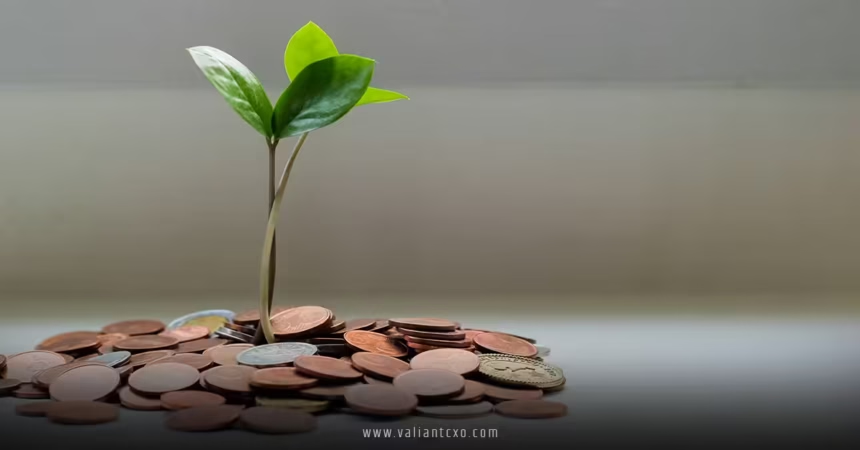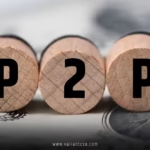Sustainability in US Banking: Green Loans and Eco-Finance is more than a buzzword—it’s a revolution reshaping how banks operate and how we think about money. Picture this: your bank isn’t just a vault for your savings but a catalyst for a greener planet. From funding solar panels to supporting eco-friendly businesses, banks are stepping up to combat climate change while offering financial products that align with your values. But what does this mean for you, the everyday consumer? Let’s dive into the world of green loans and eco-finance to uncover how banks are paving the way for a sustainable future and how you can get involved.
What Is Sustainability in US Banking: Green Loans and Eco-Finance?
Imagine a bank that doesn’t just chase profits but also prioritizes the planet. That’s the heart of Sustainability in US Banking: Green Loans and Eco-Finance. It’s about financial institutions integrating environmental, social, and governance (ESG) principles into their operations. This means offering products like green loans, which fund projects that reduce carbon footprints, or sustainability-linked bonds that reward eco-conscious businesses. Banks are no longer just money managers; they’re stewards of a low-carbon economy.
Green loans, for instance, are designed to finance projects with clear environmental benefits—think solar panel installations, energy-efficient home upgrades, or electric vehicle purchases. Eco-finance, a broader term, encompasses a range of financial products, from green bonds to sustainable savings accounts, all aimed at promoting environmental responsibility. Why does this matter? Because banks control the flow of capital, and by directing funds toward sustainable initiatives, they can drive massive change.
Why Are Banks Going Green?
Why are banks suddenly so keen on sustainability? It’s not just about warm fuzzies. Consumers are demanding it—nearly 40% of Americans want banking options that align with their environmental values. Plus, climate risks are financial risks. Extreme weather events, like hurricanes or wildfires, can disrupt businesses and economies, making eco-friendly investments a safer bet. Banks like Bank of America and JPMorgan Chase are committing billions to Sustainability in US Banking: Green Loans and Eco-Finance, with goals like achieving net-zero emissions by 2050. It’s a win-win: good for the planet, good for business.
The Rise of Green Loans in the US
What Are Green Loans?
Green loans are like regular loans but with a green twist. They’re specifically designed to fund projects that benefit the environment. Want to install solar panels on your roof? A green loan can cover the cost. Thinking about buying an electric car? There’s a green loan for that too. These loans often come with perks like lower interest rates or flexible repayment terms, making it easier to invest in sustainability.
For businesses, green loans can fund energy-efficient upgrades, renewable energy projects, or even sustainable agriculture. The key is that the funds must be used for projects that meet strict environmental criteria, often aligned with frameworks like the Green Loan Principles set by the Loan Syndications and Trading Association.
How Green Loans Work
So, how do you get one? It’s not much different from applying for a traditional loan. You approach a bank or credit union offering green loan products, submit your application, and specify the eco-friendly project you’re funding. The bank evaluates the project’s environmental impact—say, how much carbon emissions your solar panels will reduce—and approves the loan if it meets their green criteria. Some banks even offer incentives, like discounted rates for hitting sustainability targets.
For example, Clean Energy Credit Union, a Fossil Free certified institution, offers loans for clean energy vehicles and green home improvements. These loans aren’t just about financing; they’re about empowering you to make a difference.
Benefits of Green Loans for Consumers and Businesses
Why choose a green loan? For starters, they often come with financial perks. Lower interest rates or tax incentives can make them more affordable than standard loans. Plus, they let you contribute to a greener future without breaking the bank. For businesses, green loans can enhance your brand’s reputation, attract eco-conscious customers, and even improve profitability by reducing energy costs.
Take a small business owner retrofitting their factory with energy-efficient lighting. A green loan covers the upfront costs, and the energy savings pay off over time. It’s like planting a seed today that grows into a forest of savings and sustainability tomorrow.
Eco-Finance: Beyond Green Loans
What Is Eco-Finance?
Sustainability in US Banking: Green Loans and Eco-Finance goes beyond loans. Eco-finance includes a suite of financial products designed to promote environmental and social good. Think green bonds, which raise capital for renewable energy projects, or sustainability-linked loans that tie interest rates to ESG performance. It’s about aligning every dollar with a purpose.
Banks are also innovating with products like green savings accounts, where your deposits fund eco-friendly projects, or carbon calculators integrated into mobile apps to track your environmental impact. These tools make sustainability accessible to everyone, not just big corporations.
The Role of FinTech in Eco-Finance
Enter FinTech, the tech-savvy cousin of traditional banking. FinTech is supercharging Sustainability in US Banking: Green Loans and Eco-Finance by making it easier to access and manage green financial products. Platforms like Aspiration offer accounts that avoid fossil fuel investments, while apps like Atmos Financial let you track your carbon footprint alongside your spending.
FinTech also streamlines loan approvals. Automated systems can assess a project’s environmental impact in seconds, cutting down on paperwork and bureaucracy. It’s like giving sustainability a turbo boost, making it faster and more efficient for banks to fund green initiatives.
Sustainability-Linked Bonds and Investments
Ever heard of a bond that rewards you for going green? Sustainability-linked bonds are gaining traction in the US. Unlike green bonds, which fund specific eco-projects, these bonds tie financial incentives to sustainability goals. For example, a company might issue a bond with a lower interest rate if it cuts emissions by 20% within five years. It’s a carrot-and-stick approach that encourages businesses to prioritize the planet.
Banks like Citigroup are leading the charge, issuing billions in sustainability-linked bonds to fund everything from renewable energy to sustainable agriculture. These investments are a cornerstone of Sustainability in US Banking: Green Loans and Eco-Finance, channeling capital where it’s needed most.
Challenges in Adopting Sustainability in US Banking: Green Loans and Eco-Finance
Regulatory Hurdles
Going green isn’t all smooth sailing. Banks face a tangle of regulations, from state-level disclosure requirements to federal guidelines on ESG reporting. The EU Taxonomy, for instance, sets strict standards for what qualifies as “sustainable,” and US banks are under pressure to align with similar frameworks. Compliance can be costly, especially for smaller banks without the resources to overhaul their systems.
Then there’s the risk of greenwashing—when banks exaggerate their eco-credentials to attract customers. Regulators like the SEC are cracking down, demanding transparency to ensure claims about Sustainability in US Banking: Green Loans and Eco-Finance are legit.
Consumer Awareness and Demand
Here’s a question: do you know what your bank does with your money? Many Americans don’t, and that’s a hurdle for green banking. While demand for sustainable products is growing, some consumers still prioritize convenience or higher returns over eco-impact. Banks need to educate customers about the benefits of green loans and eco-finance, showing how small choices—like opening a green savings account—can make a big difference.
Balancing Profit and Purpose
Banks aren’t charities. They need to balance sustainability with profitability. Green loans, while impactful, can carry risks. For instance, renewable energy projects often have high upfront costs and long payback periods. Banks must carefully assess these risks to avoid financial losses, all while staying true to their ESG commitments. It’s like walking a tightrope between doing good and doing well.
How Banks Are Leading the Charge
Major Players in Green Banking
Big names like Bank of America, Wells Fargo, and JPMorgan Chase are all in on Sustainability in US Banking: Green Loans and Eco-Finance. Bank of America, for example, has pledged $1.5 trillion by 2030 to support sustainable projects, with $1 trillion earmarked for climate initiatives. Wells Fargo offers green home improvement loans, while JPMorgan Chase backs renewable energy projects across the US.
Smaller institutions are stepping up too. Community development financial institutions (CDFIs) like Spring Bank focus on underserved communities, offering green loans to promote energy efficiency and financial inclusion. These banks prove that size doesn’t matter when it comes to impact.
Certifications and Standards
Ever wonder how you know a bank is truly green? Certifications like Fossil Free and Green America set the bar. Fossil Free banks, like Clean Energy Credit Union, commit to zero fossil fuel investments. Green America certifies banks that prioritize social and environmental justice. These badges of honor help you choose institutions that walk the talk on Sustainability in US Banking: Green Loans and Eco-Finance.
Partnerships and Collaborations
Banks aren’t going it alone. They’re teaming up with governments, nonprofits, and even tech companies to amplify their impact. The Net-Zero Banking Alliance, for instance, brings together banks committed to aligning their portfolios with net-zero emissions by 2050. Partnerships like these make Sustainability in US Banking: Green Loans and Eco-Finance a collective effort, not just a solo act.
How You Can Get Involved
Want to join the green banking revolution? Start by choosing a bank that prioritizes Sustainability in US Banking: Green Loans and Eco-Finance. Look for certifications like B Corp or Fossil Free, and check if they offer green loans or sustainable accounts. If you’re a homeowner, consider a green loan for energy-efficient upgrades. Businesses can explore sustainability-linked loans to fund eco-friendly operations.
Every dollar you deposit or borrow can be a vote for the planet. By supporting banks that invest in renewable energy or sustainable infrastructure, you’re helping shape a greener future. It’s like planting a tree—small today, but a game-changer tomorrow.
The Future of Sustainability in US Banking: Green Loans and Eco-Finance
What’s next for green banking? The future is bright, with FinTech driving innovation and consumer demand pushing banks to do more. Expect to see more digital tools, like apps that track your carbon footprint, and new financial products, like blue bonds for ocean conservation. Regulatory frameworks will likely tighten, ensuring banks stay accountable.
As climate change intensifies, banks will play an even bigger role in funding the transition to a low-carbon economy. Sustainability in US Banking: Green Loans and Eco-Finance isn’t just a trend—it’s the future of finance. By embracing green loans and eco-finance, banks are proving that profit and purpose can go hand in hand.
Conclusion
Sustainability in US Banking: Green Loans and Eco-Finance is transforming the financial landscape, one green loan at a time. From funding solar panels to supporting sustainable businesses, banks are stepping up as leaders in the fight against climate change. Green loans offer consumers and businesses a chance to invest in eco-friendly projects with financial perks, while eco-finance products like sustainability-linked bonds broaden the impact. Despite challenges like regulatory hurdles and greenwashing risks, the momentum is unstoppable. By choosing banks that prioritize sustainability, you’re not just managing your money—you’re shaping a better future. So, why not take the leap? Explore green banking options today and be part of the change.
FAQs
1. What are green loans in the context of Sustainability in US Banking: Green Loans and Eco-Finance?
Green loans are financial products designed to fund environmentally friendly projects, such as renewable energy installations or energy-efficient home upgrades. They often come with lower interest rates and are part of the broader push for Sustainability in US Banking: Green Loans and Eco-Finance.
2. How can I find banks offering Sustainability in US Banking: Green Loans and Eco-Finance?
Look for banks with certifications like Fossil Free or Green America. Institutions like Clean Energy Credit Union and Spring Bank offer green loans and sustainable accounts. Check their websites or visit Bank.Green for a list of eco-friendly banks.
3. Are there financial benefits to choosing green loans?
Yes! Green loans often have lower interest rates, tax incentives, or flexible terms. Plus, energy-efficient upgrades funded by these loans can reduce utility bills, making them a smart choice within Sustainability in US Banking: Green Loans and Eco-Finance.
4. What is the difference between green loans and sustainability-linked loans?
Green loans fund specific eco-friendly projects, like solar panels. Sustainability-linked loans tie interest rates to ESG goals, like reducing emissions, and are more flexible. Both are key to Sustainability in US Banking: Green Loans and Eco-Finance.
5. How does FinTech support Sustainability in US Banking: Green Loans and Eco-Finance?
FinTech enhances green banking with tools like carbon-tracking apps and automated loan assessments. Platforms like Aspiration make it easier to access sustainable financial products, driving the growth of Sustainability in US Banking: Green Loans and Eco-Finance.
For More Updates !! : valiantcxo.com


